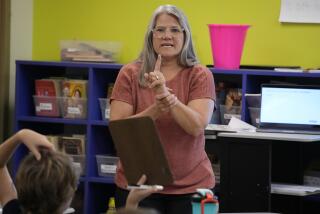It All Adds Up
- Share via
While many of the world’s athletes were competing in the Goodwill Games in Moscow last week, another international competition of perhaps greater significance was going on--though it had less visibility. High-school students from 37 nations met in Warsaw for the annual International Mathematical Olympiad, a rigorous competition that challenges the world’s brightest math students to solve six problems in two 4 1/2-hour sessions.
When the dust settled, the six-member team from the United States--which included David Grabiner, 18, a recent graduate of Claremont High School--and the Soviet Union were tied for first place. Each team had 203 points out of a possible 252. Runners-up included West Germany (196 points), China (177) and East Germany (172).
At a time when blue-ribbon panels decry the state of mathematics education in the United States, it is reassuring to know that at the highest levels American kids can match any others.
This was no mere test of calculating ability. The teams are not made up of idiot savants who can multiply two 10-digit numbers in their heads. The students must demonstrate mathematical creativity and deep thinking skills. Among the problems in this year’s Olympiad:
“Let D be any positive integer not equal to 2, 5 or 13. Show that one can find distinct A and B in the set (2, 5, 13, D) such that A times B minus 1 is not a perfect square.”
Please don’t write to us for the answer. There is no single correct solution. Besides which we don’t know any of them. Fortunately, those impressive high-school students do. Their skills are enormous, and the nation can be proud of their achievements.
More to Read
Go beyond the scoreboard
Get the latest on L.A.'s teams in the daily Sports Report newsletter.
You may occasionally receive promotional content from the Los Angeles Times.





